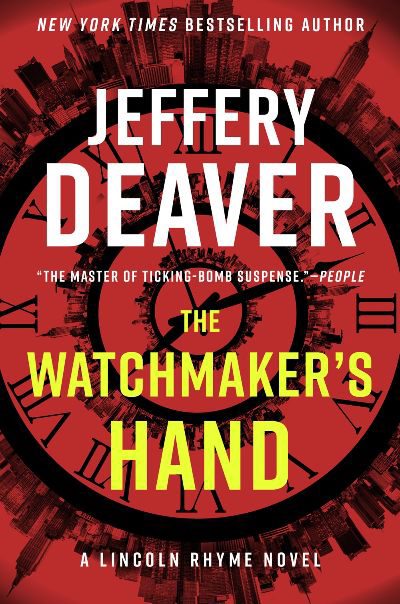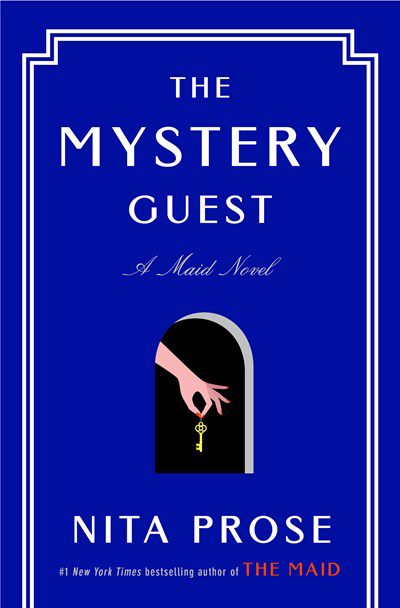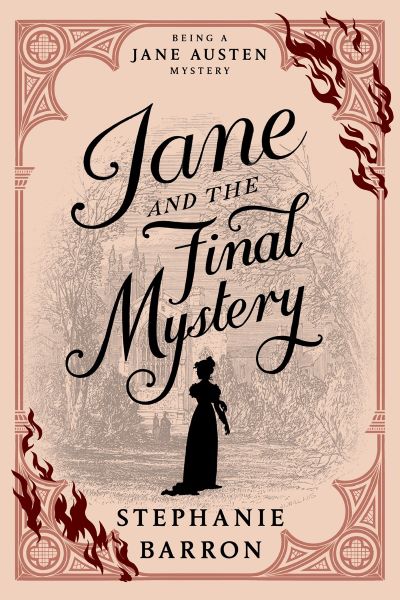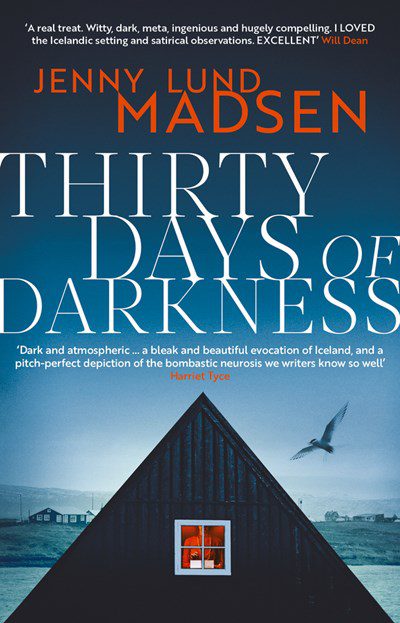This book could just as well be titled When the HOA Attacks or Ring Cameras on Steroids: A How-To. Oleander Court, a street in ritzy Alpharetta, GA, has it all. The fountain with $500 apiece koi, the perfectly maintained lawns (did I mention that HOA?), the perfectly Botoxed neighbors. But a few residents keep things from being too plastic. An artist, Helen Beecham, has moved in and while she likes to observe the others, she’s doesn’t love their snooty book clubs (at which the book is never mentioned) or other tortuous gatherings. A Korean American family, the Jungs, lives on Oleander, too, amid nasty comments; one neighbor in particular spreads the rumor that the mother barely speaks English, only Chinese. Lesbian couple Ray and Laura are hiding their rocky marriage and past secrets. And then there’s Adelaide, who formerly lived in a trailer park but is now married to a doctor and struggling to feel she belongs. Closed circle meets cozy when the nastier neighbors start getting bumped off in their homes, but with little attendant grisliness and dollops of dark humor. Come for the bitchiness, stay for the deep characterization of the oddball characters as well as the puzzling whodunit.
Mystery & Detective
Every flight headed to Italy should have on board a few dozen copies of Trinchieri’s mysteries—they are the perfect warm up to an Italian vacation, full of wry humor, eccentric characters, a gentle murder or two, plenty of excellent wine, and best of all a whole lot of Tuscan cooking. Ex-NYPD detective Nico Doyle moved to the small town of Gravigna after the death of his wife, a native, and he’s been embraced by the residents, even helping out in the kitchen of his in-laws’ ristorante (and getting great reviews). But he can’t leave his law enforcement years completely behind him, and he’s regularly summoned by Perillo, one of the local carabinieri, to help out on a case. Here, in the fourth installment, the murder victim is an older woman—owner of the handsome Villa Salviati—whose murder produces a bevy of possible suspects, including lovers, friends, and a couple of mean-spirited daughters. Will Nico and Perillo ever be able to return Gravigna back to more tranquil days? A delight from start to finish.
Paraplegic forensic Captain Lincoln Rhyme; his wife, Detective Amelia Sachs; and their team of NYPD officers race against the clock in Deaver’s terrifying thriller. A construction crane collapses, and without a last-second move by the operator, it would have done extensive damage. The crash ends up only killing several people rather than hundreds. It was sabotage, and the crash is only the beginning, as those claiming responsibility will conduct another act in 24 hours unless their demands are met. One by one, the team members experience accidents designed to eliminate Rhyme’s trustworthy colleagues and those he truly cares about. Rhyme learns that the mastermind is someone he has been unable to capture, The Watchmaker. The Captain’s nemesis seeks revenge, his end goal to murder Rhyme. Deaver is the master of manipulation and telling a story quickly, and he is at the top of his game here. Readers should not be intimidated by the 15 previous entries in the series, as this one can be read as a standalone. The Watchmaker’s Hand is a fantastic thriller with great characters and jaw-dropping surprises.
Millions of fans of Molly—“the maid”—Gray will be delighted with this wonderful second installation, which features returning characters (such as Mr. Preston, the congenial doorman, and Detective Stark, the grouchy cop) along with a handful of new characters. But most important is J.D. Grimthorpe, renowned mystery author, who chooses Molly’s five-star Regency Grand Hotel to make a most important announcement. No sooner does he mount the stage in the perfectly appointed tea room (expect nothing less from Molly, the head maid) than he suddenly drops dead. Very, very dead. And not from a medical condition. J.D. Grimthorpe was murdered. The path to finding the murderer is a long and twisted one, taking Molly back into her childhood and her early days working alongside her beloved Gran. But as guests and employees start looking at each other with accusation in their eyes, the pressure for Molly to solve the case mounts. In the first volume, The Maid, there was much discussion about Molly being autistic or otherwise neurodivergent. Not qualified to make such an assessment myself, I prefer to think of Molly as eccentric. As this tale draws to a close, several secrets are most satisfyingly revealed, and one major opportunity presents itself, which will leave me in a state of wonder until the next Molly mystery. Pronto, please.
In March of 1817, Jane Austen is struggling to complete her latest manuscript, The Brothers, in spite of her declining health: “I, who enjoyed a riotous constitution throughout my four decades, had felt so little like myself in the previous twelvemonth that I found it hard to remember being free of pain.” But when the 15-year-old son of her widowed friend Elizabeth Heathcote (whose brother once proposed to Jane) is accused of the drowning death of a senior classmate at the prestigious Winchester College boys’ boarding school, she summons the energy to travel to Winchester with her beloved 19-year-old nephew, Edward, to investigate. There, she learns from Elizabeth that for the past three years, William had been the “subject of relentless attacks on his spirit, his mind, and his standing in the world.” He had been especially bullied by the sadistic late Arthur Prendergast, who enjoyed hazing the younger boys. Is there a connection between Prendergast’s murder, the malicious campaign against William, and an entailed inheritance that would benefit William? Jane is determined to clear William’s name before she succumbs to her illness. Over the course of 14 books, the multitalented Barron, who also pens spy thrillers as Francine Matthews, has brilliantly combined authentic historical and biographical details with skillful plotting and a credible evocation of Austen’s wry, distinctive voice. She brings the English author’s final investigation to a poignant, unforgettable close. Fans of this historical series will not be disappointed, and kudos to Barron’s excellent double-entendre title. While the earthly crime may be solved, the final mystery is one that we all will face.
One of the darkest, but funniest, novels I’ve read in a long time—largely thanks to the wonderful narrator, Lucy Chase. Lucy is taking a break from Los Angeles and heading back to her hometown of Plumpton, Texas. It’s been five years since she’s been in Plumpton, where nearly everyone, including her parents, is convinced she murdered Savvy, her best friend. After all, she was found leaving the scene of the crime, covered in Savvy’s blood, Savvy’s DNA under her nails, and suffering from amnesia. Kind of a downer, right? The one exception is her Grandma, who believes Lucy’s innocence and uses her 80th birthday party to lure Lucy home. It also seems like Ben Owens, the editor of the hugely popular true crime podcast “Listen for the Lie” is in town, with Lucy in his cross-hairs. Grandma is convinced that the handsome Ben will end up exonerating Lucy—and Lucy ends up sort of working with, and sleeping with, Ben, while also fooling around with a few other potential witnesses, like her ex-husband. The prose snaps and the plot speeds along in Tintera’s portrayal of small town, alcohol-addled, smiling-to-your-face-while-trashing-you-behind-your-back Texas. This would make a perfect series—and what fun to cast! For those who enjoyed Jennifer Hillier’s Things We Do in the Dark and Bella Mackie’s How to Kill Your Family.
In cozies, we often meet our hero when they are in a state of flux, and Death by Demo is a classic example. Jaime is recently divorced—her husband was having an affair—and the prenuptial she signed without reading has left her nearly broke. She and her ne’er-do-well ex-husband ran a highly successful construction and interior design firm in Charlotte, NC, but now all she’s left with is a dilapidated Queen Anne style house and her best friend’s couch. While everyone expects Jaime to sell the house, she takes a certain liking to it and decides to renovate it on her own. That’s part of what makes this book so interesting, watching Jamie—who’s a real carpenter—put the historic home back together while she ruminates on how her life fell apart. But in the midst of some serious demolition, she comes across a body walled up in her new home. Tragic, for sure. But also annoying, as the house is now declared a crime scene and Jaime is forced to abandon the one thing that’s keeping her sane. Until it dawns on her that maybe law enforcement needs a little help. Well-written, nicely plotted, with great insights into the renovation industry and a cute and sensitive next door neighbor. Cozy readers will delight in this discovery.
A deep, dark descent into one of Italy’s most disturbing true crimes, drawing on actual documents, news reports, and interviews to tell the story. Billed by the publisher as a “spellbinding literary thriller”—it’s certainly spellbinding, but no one’s definition of a thriller—this is a slow, methodical, layered journey into the murder of 23-year-old Luca Varani. The method? Torture. The perpetrators? Manuel Foffo, who confesses to his father, while driving to a family funeral, that he killed someone—three, four, five days ago?—he’s too drugged out to know. And Marco Prato, also from a “good family,” a nightclub promoter, gay and considering transitioning. Manuel and Marco barely know each other, although after several drug-and-alcohol fueled days holed up in Manuel’s apartment they develop an intimacy that’s somewhat sexual but more a twisted sort of friendship. “So-called psychic contagion, like a racing engine, brought the two young men close to the point of fusion.” What do they share, besides a love of drugs and alcohol? For starters, an inability to mature, jealousy of the rich, and complete irresponsibility. Lagioia intertwines the descent of Manuel and Marco with the descent of Rome itself—drug filled, rat-infested, garbage strewn, home to wild animals, yet ultimately, he claims, freeing. This story begs for comparison with the Nathan Leopold and Richard Loeb murder of Bobby Franks in 1924 Chicago. Brilliantly translated.
Gardiner shakes up the serial-killer genre with her latest thriller. FBI profiler Caitlin Hendrix visits serial killer Efrem Judah Goode in prison. He shows her detailed drawings of the women he has killed, but none of them are the victims he’s incarcerated for killing. He claims innocence for those women’s murders but is not innocent of being a murderer. There is a copycat called the Broken Heart Killer, and somehow Goode and this UNSUB are connected. Caitlin dives into the case and will once again put her career and life on the line for justice, while bringing closure to the families of the women Goode killed. What she uncovers will surprise even the most jaded reader. Gardiner has a gift for tackling gruesome and uncomfortable topics and giving the prose a literary spin. While other authors might wallow in the ugly, Gardiner makes it beautiful. Fans of true crime and the television show Criminal Minds should make Gardiner mandatory reading.
How often do you hear the phrase “comic Nordic Noir”? I’m guessing not often. Yet that’s exactly what Madson delivers in this delightful/terrifying novel that parodies the publishing industry while also taking on a real, live murder case. Hannah is one of Denmark’s most successful literary authors, even if no one actually reads her. Forced by her editor to attend a book convention—snobbish Hannah abhors these sorts of things—she manages to get into an argument with crime writer Jørn Jensen, Denmark’s James Patterson. In the end, she agrees to Jensen’s challenge to write a crime novel in one month. Why not? All she’s doing is facing a nasty case of writer’s block while day drinking. To keep her focused, her editor bundles her off to the rural, coastal Icelandic town of Húsafjörður, where Hannah lives with an older woman, Ella. Hannah’s take on life in Húsafjörður is wonderfully droll—indeed, the town and its cast of characters would make the perfect setting for a cozy. But things take a more violent turn when Ella’s nephew Thor drowns, likely murdered. Faced with a completely incompetent police officer, Hannah can’t help but take on the investigation herself. And best of all, the sleuthing will let her gather all the information she needs to write her mystery. If, of course, she survives. For fans of Anthony Horowitz.










